DUTCH ELM DISEASE
What is Dutch Elm Disease?
Dutch Elm Disease is a fungal disease which has killed countless elms of many species around the world. It is one of the most destructive tree diseases known. The fungus poisons the elm’s sap and effectively prevents a free-flow of water through the tree to its leaves.
The disease is spread in two ways:
- Travelling through interconnecting root systems (many elms are clones and this is one reason why they have little or no genetic resistance to the disease); and
- Carried between trees by elm bark beetles.
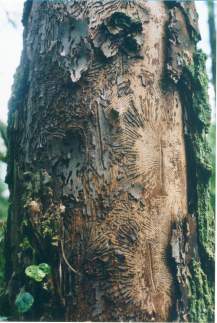 | Elm bark beetles feed on young shoots of larger elms taking fungal spores with them. Many of these spores will fall in just the right place to begin a new infection. During the summer the female beetles lay their eggs under the bark of the elm wood (standing or fallen). The grubs hatch and create galleries of tunnels within which the elm fungus can fruit and produce new spores. These are then ready to be carried out with the emerging beetles. |
What should you look out for?Early symptoms include a dramatic browning and wilting of leaves visible throughout spring and summer (top right). Once infected the tree will very rapidly succumb to widespread leaf dieback. Evidence of beetle breeding will be holes approximately 1/8 inch in diameter in the bark, beneath which may be beetles or grubs. The ends of the branches will show the characteristic ‘shepherd’s crook’ symptom (bottom right) and there may be bark loss. | 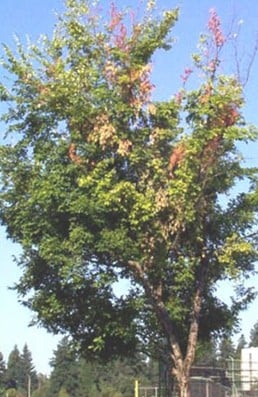 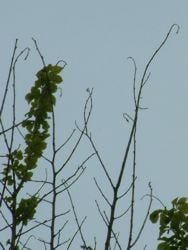 |
Why save elms?
It is not necessarily true that all elms will die. Young elms will certainly survive but we may be able to do something to protect large elms as well. English elm is still one of the most widespread tree species on the Island, in some parts it is almost the only one.
Following the first catastrophic outbreak of disease in 1975 there is now a considerable body of practical, scientific and anecdotal evidence suggesting that the spread of disease can be slowed down.
By taking action now we can all help to make sure that young elms have a chance to become the mature trees of the future.
What action can be taken?
- Identify infected trees at an early stage.
- Fell and burn infected elm timber.
- Remove the bark and burn, you can then keep the elm for firewood or timber. If you do not remove the bark, the logs will become a breeding site for beetles.
What can you do?
- Call in professional tree contractors to deal with your infected elms as soon as possible – The Isle of Wight Council has a list of contractors.
- If your trees are protected by a Tree Preservation Order, planning conditions or by being within a Conservation Area you will need consent to carry out any works. However, your application will be given priority. You can apply for consent on the Tree Section’s application form. Application form help. Form checklist.
- If you suspect that there is infection on public (Council owned) land, contact the relevant section of the Council as soon as possible, eg highways, parks, schools, etc.
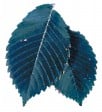 | Typical elm leaves (left). Leaves have an asymmetric base and are rough to the touch. An elm bark beetle (right – not to scale). | 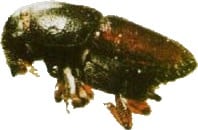 |
Island 2000 can help by supplying disease resistant native elms to help replace those you may have lost or to create new plantings of elm in the Island landscape.
Island 2000 Contact Details
| Island 2000 Trust Venture Quays Castle Street East Cowes Isle of Wight PO32 6EZ |
Page last updated on: 07/01/2013





